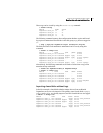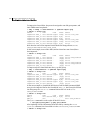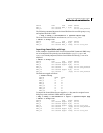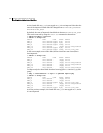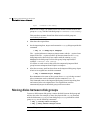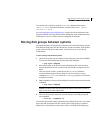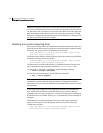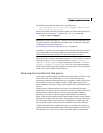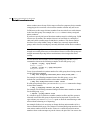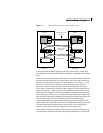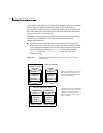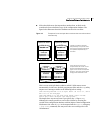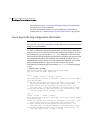
187Creating and administering disk groups
Moving disk groups between systems
The following error message indicates a recoverable error.
VxVM vxdg ERROR V-5-1-587 Disk group groupname: import failed:
Disk for disk group not found
If some of the disks in the disk group have failed, you can force the disk group to
be imported by specifying the
-f option to the vxdg import command:
# vxdg -f import diskgroup
Caution: Be careful when using the -f option. It can cause the same disk group
to be imported twice from different sets of disks. This can cause the disk group
configuration to become inconsistent.
See “Handling conflicting configuration copies” on page 190.
As using the
-f option to force the import of an incomplete disk group counts as
a successful import, an incomplete disk group may be imported subsequently
without this option being specified. This may not be what you expect.
These operations can also be performed using the vxdiskadm utility. To deport
a disk group using vxdiskadm, select menu item 8 (Remove access to
(deport) a disk group). To import a disk group, select item 7 (Enable
access to (import) a disk group). The vxdiskadm import operation
checks for host import locks and prompts to see if you want to clear any that are
found. It also starts volumes in the disk group.
Reserving minor numbers for disk groups
A device minor number uniquely identifies some characteristic of a device to the
device driver that controls that device. It is often used to identify some
characteristic mode of an individual device, or to identify separate devices that
are all under the control of a single controller. VxVM assigns unique device
minor numbers to each object (volume, plex, subdisk, disk, or disk group) that it
controls.
When you move a disk group between systems, it is possible for the minor
numbers that it used on its previous system to coincide (or collide) with those of
objects known to VxVM on the new system. To get around this potential
problem, you can allocate separate ranges of minor numbers for each disk
group. VxVM uses the specified range of minor numbers when it creates volume
objects from the disks in the disk group. This guarantees that each volume has
the same minor number across reboots or reconfigurations. Disk groups may
then be moved between machines without causing device number collisions.
VxVM chooses minor device numbers for objects created from this disk group
starting at the base minor number base_minor. Minor numbers can range from
this value up to 16,777,215. Try to leave a reasonable number of unallocated



